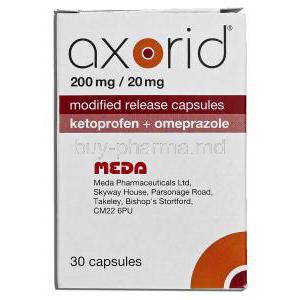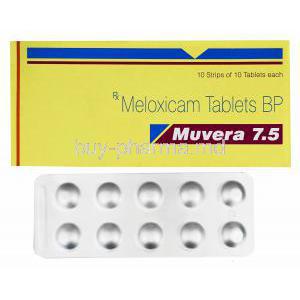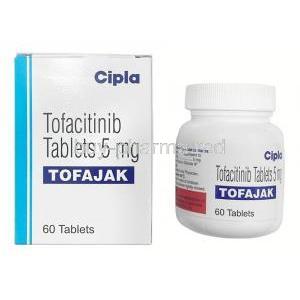Axorid
- I. Introduction to Axorid
- II. The Clinical Uses of Axorid
- III. The Pharmacodynamics of Axorid: How it Works
- IV. Axorid Dosage and Administration
- V. Axorid Composition and Active Ingredients
- VI. Storage Requirements for Axorid
- VII. Drug Interactions with Axorid
- VIII. Warnings and Contraindications Associated with Axorid
- IX. The Careful Administration of Axorid
- X. Important Precautions When Taking Axorid
- XI. Administering Axorid to Special Populations
- XII. Understanding the Side Effects of Axorid
- XIII. The Off-Label Uses of Axorid
- XIV. Managing Overdosage of Axorid
- XV. Handling Precautions for Axorid
I. Introduction to Axorid
Axorid, renowned for its properties in combating inflammation and pain, is prominent in clinical medicine. Its composition, which combines ingredients, classifies it as a nonsteroidal anti-inflammatory drug (NSAID) with additional elements that protect the gastrointestinal system. This unique combination of components aims not only to relieve symptoms but also to provide therapeutic benefits by addressing both the symptoms and causes of specific conditions. In the realm of therapy, Axorid has established itself as a treatment for chronic diseases such as osteoarthritis and rheumatoid arthritis. The active ingredients of this medication play a role not only in providing temporary relief but also in influencing the processes that regulate pain and inflammatory responses within the human body.
II. The Clinical Uses of Axorid
Axorid is a medication that contains two active ingredients, ketoprofen and omeprazole. Ketoprofen is a non-steroidal anti-inflammatory drug (NSAID) that is used to relieve pain and inflammation in arthritis 1. Omeprazole is used to prevent the potential side effects of ketoprofen on the gut 1. Axorid capsules are prescribed to people who need to keep taking an NSAID to relieve the pain of their condition, but who are at a high risk of getting a peptic ulcer or have previously had a peptic ulcer 1. The combination of medicines in Axorid capsules is used to relieve pain and inflammation in people with rheumatoid arthritis, ankylosing spondylitis and osteoarthritis who have already had, or are at high risk of getting stomach or duodenal ulcers 1. Axorid capsules are modified-release capsules, which means they are designed to release the medicine steadily over the day to provide continuous pain relief 1.
III. The Pharmacodynamics of Axorid: How it Works
The way Axorid works is an example of how intelligent pharmaceuticals can be. It targets the cyclooxygenase pathway, which is a vital pathway involved in making prostaglandins. These prostaglandins play a role in causing pain and inflammation. Axorid does two things: it reduces the production of these inflammatory substances and also helps protect the body from the gastrointestinal side effects that are often seen with NSAIDs. The effectiveness of Axorid as a pain reliever speaks volumes about its ability to ease discomfort caused by conditions, ultimately improving the quality of life for those who suffer from it.

IV. Axorid Dosage and Administration
Properly administering Axorid requires following the recommended dosage guidelines. These guidelines are carefully calibrated to achieve therapeutic results while minimizing potential adverse reactions. It is crucial to adjust the dosage considering factors like age, existing health conditions, and other medications being taken concurrently. The goal is to find the dosages that balance effectiveness with safety. Additionally, it's essential to consider any variations in hepatic function when determining the appropriate dosage. Ultimately, treatment should be individualized for an approach to care.
V. Axorid Composition and Active Ingredients
Axorid is a medication that contains two active ingredients, ketoprofen and omeprazole 1. Ketoprofen is a non-steroidal anti-inflammatory drug (NSAID) that is used to relieve pain and inflammation in arthritis 1. Omeprazole is used to prevent the potential side effects of ketoprofen on the gut 1. Axorid capsules are prescribed to people who need to keep taking an NSAID to relieve the pain of their condition, but who are at a high risk of getting a peptic ulcer or have previously had a peptic ulcer 1. The combination of medicines in Axorid capsules is used to relieve pain and inflammation in people with rheumatoid arthritis, ankylosing spondylitis and osteoarthritis who have already had, or are at high risk of getting stomach or duodenal ulcers 1. Axorid capsules are modified-release capsules, which means they are designed to release the medicine steadily over the day to provide continuous pain relief 1.
1: NetDoctor
VI. Storage Requirements for Axorid
To ensure that Axorid remains effective, it is crucial to follow storage guidelines. These guidelines are essential for maintaining the drug's effectiveness and preventing deterioration. The stability and lifespan of Axorid depend on how it's stored and protected from environmental factors, so it should be kept in conditions that help maintain its quality.
VII. Drug Interactions with Axorid
Before incorporating Axorid into a patient's treatment plan, it is crucial to consider possible interactions with other medications. This careful approach is necessary to prevent any effects that may arise from taking different drugs together. Taking steps and educating the patient are vital in avoiding these negative interactions.
VIII. Warnings and Contraindications Associated with Axorid
Axorid is not recommended for people with medical conditions or allergies. It is the responsibility of healthcare professionals to carefully assess patients to determine if Axorid suits them to prevent any worsening of their existing health problems. This thorough evaluation ensures the safety and ethical administration of pharmaceutical care, guaranteeing that Axorid is prescribed only when it aligns with the patient's being and overall health situation.
IX. The Careful Administration of Axorid
Administering Axorid, a medication used to treat conditions, requires a careful approach. To reduce the risk, healthcare providers must consider the patient's medical history. It is advisable to increase the dosage to minimize potential side effects. For individuals who use Axorid for a period, it is crucial to closely monitor liver function, kidney parameters, and gastrointestinal health to address any adverse outcomes promptly.
X. Important Precautions When Taking Axorid
For individuals who are at a higher risk, such as those who have had gastric ulcers in the past or have cardiovascular concerns, it is essential to exercise increased caution when prescribing Axorid. Taking medications that protect the stomach and closely monitoring for any signs of blood disorders can help ensure patient safety. Recognizing adverse effects early on is crucial in determining the patient's prognosis.
XI. Administering Axorid to Special Populations
The elderly population, who often have ways of processing and responding to drugs, require personalized dosage plans for Axorid to minimize the occurrence of adverse reactions. When it comes to women and breastfeeding mothers, the limited availability of reliable safety data calls for a cautious approach to prescribing this medication. The administration of Axorid to children should be supported by clinical justification and careful monitoring to ensure the safety and welfare of this vulnerable group.
XII. Understanding the Side Effects of Axorid
The range of side effects caused by Axorid can vary from mild and temporary to more severe. If you experience side effects like indigestion or headaches, adjusting the dosage or using supportive therapies may help. However, if you encounter adverse reactions such as anaphylaxis or kidney problems, it is crucial to seek immediate medical attention. Distinguishing between side effects and the intended therapeutic effects requires a clinical judgment.
XIII. The Off-Label Uses of Axorid
Outside of approved usage, Axorid has discovered a role in unofficial applications. Although these applications are based on accounts and experiences, they must strike a delicate balance between innovative therapeutic use and the legal guidelines that oversee medical practice. Ongoing research is shedding light on new services for Axorid, which may broaden its therapeutic possibilities.
XIV. Managing Overdosage of Axorid
In cases where someone takes much of Axorid, it can lead to severe symptoms like gastrointestinal bleeding, high blood pressure, and difficulty breathing. It's crucial to recognize the signs of an overdose to prevent life-threatening situations. Managing an overdose involves providing care and taking specific actions like gastrointestinal decontamination. Educating people about dosage and adherence is essential in avoiding overdose situations.

XV. Handling Precautions for Axorid
Ensure the patient and healthcare providers stay safe while giving and using Axorid. It's crucial to educate patients on how to handle and store Axorid properly, as this promotes adherence to the treatment plan and reduces any risks. Having guidelines on how to dispose of axorids is also essential to prevent environmental pollution or accidental exposure.
















